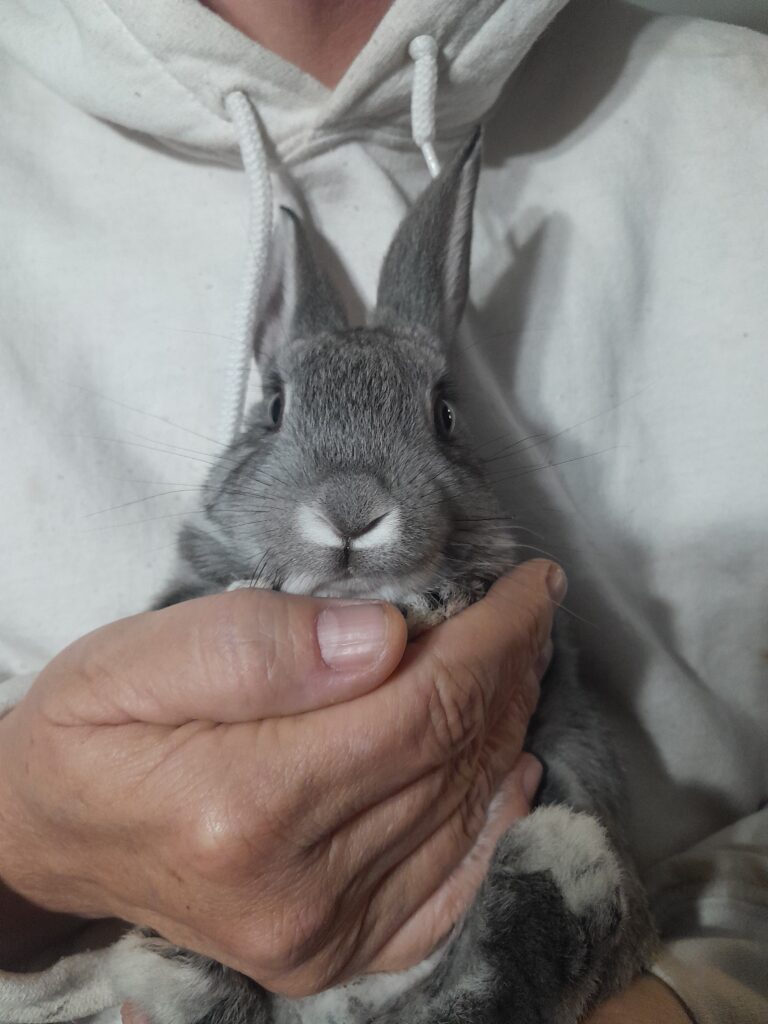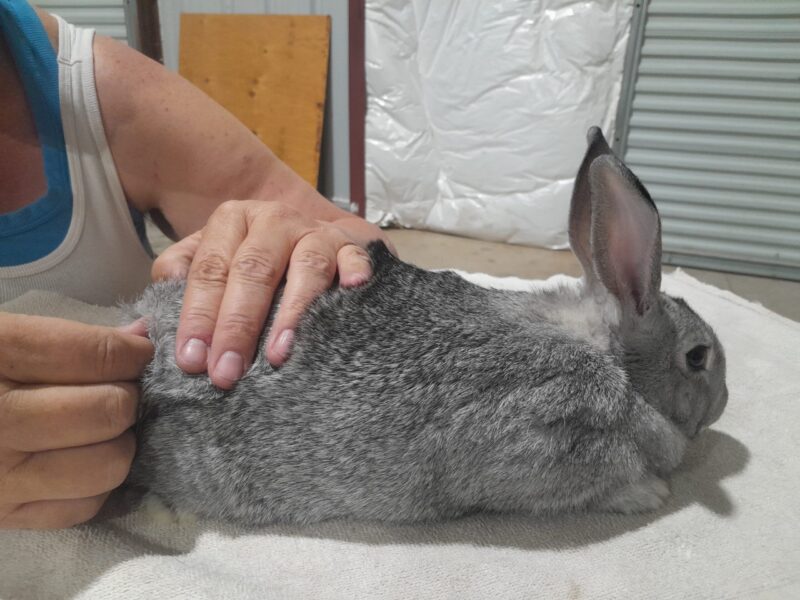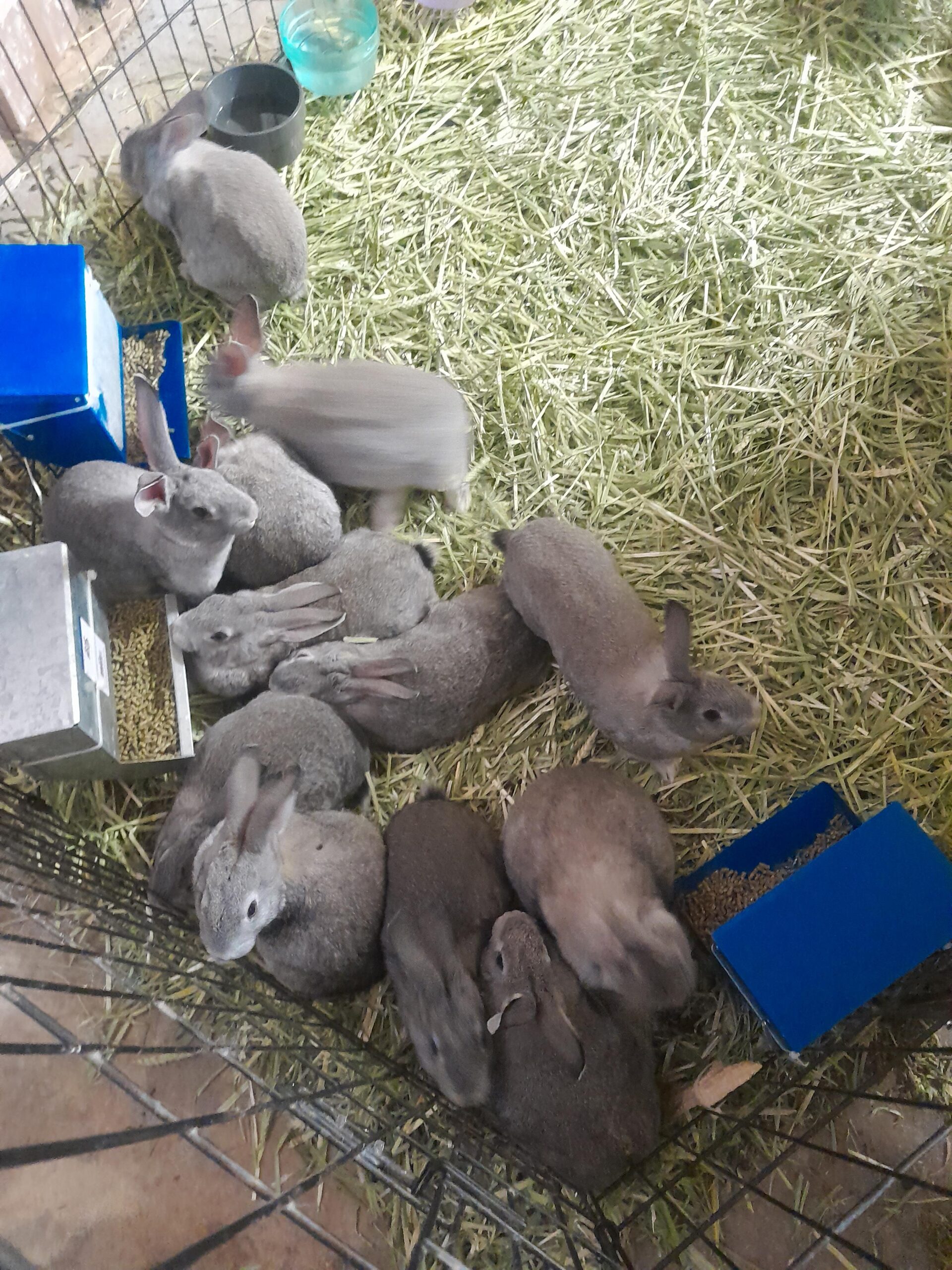Our Commitment to Conservation
The problem: An endangered heritage breed
The American Chinchilla rabbit, once a cornerstone of the U.S. fur and meat industry, fell out of favor with the rise of industrial agriculture. This historic breed, prized for its hardiness and excellent mothering, now has a fragile population and is on The Livestock Conservancy’s “Watch” list. Its unique genetics are at risk of being lost forever.
The promise: Securing the future of the AmChin
At Rit Shabbit Enterprises LLC., we are dedicated to reversing this decline. We have sourced superior genetics from multiple states to establish a genetically diverse foundation herd. By producing SOP (Standard of Perfection) American Chinchilla rabbits, our goal is to not only improve the breed’s genetic lines but also to help other breeders raise more AmChins. Your support helps us provide a sustainable future for this special heritage breed.


Why The American Chinchilla Rabbit Breed?
In the early 20th century, the American Chinchilla was one of the most popular rabbit breeds in the United States, prized for its gentle character, exceptionally soft chinchilla-like fur, and high-quality meat. Originally developed from the smaller Standard Chinchilla, American breeders selectively bred for a larger animal, better suited for commercial production. During the Great Depression and World War II, when meat was rationed, these hardy, fast-growing rabbits became a backyard staple for families looking to put food on the table. A peak year saw over 17,000 American Chinchillas registered in the US—a record that still stands today.
However, the breed’s popularity was not to last. After World War II, the market shifted dramatically. The demand for rabbit fur declined as clothing preferences changed, and the industrial meat market favored faster-growing, all-white breeds like the New Zealand and Californian for their easy-to-dye pelts. As large-scale agriculture moved on, the American Chinchilla, a product of an earlier era, was left behind. Its numbers plummeted, and it faced near extinction.
The “Watch” status: A call for action
Today, the American Chinchilla’s fragile population has earned it a place on The Livestock Conservancy’s Conservation Priority List. While it has thankfully moved off the “Critical” list in recent years, it remains on the “Watch” category, which signifies that the breed presents genetic or numerical concerns and is at risk of returning to a more endangered status.
For a breed to be on the “Watch” list, its numbers typically indicate fewer than 2,500 annual US registrations and a global population of less than 10,000. For rabbits specifically, this means fewer than 200 annual registrations and fewer than 60 active breeders. These low numbers mean the breed’s future is far from secure.
By supporting conservation breeding programs and creating a modern, sustainable market for the American Chinchilla, our company helps to reverse this trend. We are not just making a product; we are providing a purpose that is helping to restore a piece of America’s agricultural heritage and ensure the unique genetic traits of this remarkable rabbit are not lost forever.
Conservancy is a Lot of Hard/Smart Work
The journey to save a breed is a long and intricate one, and at Rit Shabbit LLC., we’re deeply invested in every step. It begins with the essential task of establishing a strong, genetically diverse breeding population. To combat the severe inbreeding that plagues small populations, we’ve diligently sourced rabbits from a network of dedicated breeders across multiple states. This extensive effort ensures a broad genetic foundation for the breed’s future.
Our breeding program is a meticulous process of selective breeding. It’s far more than simply mating rabbits; it involves carefully tracking bloodlines and making intentional pairing decisions to manage genetic diversity. We are building a future for the breed, one litter, one generation at a time, striving to bring back the full vigor and qualities that made the American Chinchilla so remarkable.
This intensive work demands a commitment to meticulous stewardship. We provide our rabbits with high-quality care and meticulously document the genetics of each individual. This also involves adhering strictly to the Standards of Perfection set by the American Rabbit Breeders Association (ARBA). This unwavering dedication ensures that our work is authentic, responsible, and truly focused on the long-term survival of the American Chinchilla breed.

The biological imperative to breed
Rabbits have a biological need to reproduce, which is crucial for the health and vitality of a breeding program. This is not simply about producing offspring; it is about maintaining the health of the doe and ensuring the long-term viability of the breed. Does that go too long without breeding can face significant reproductive health issues.
The American Chinchilla, like other heritage breeds, requires consistent breeding to preserve its unique traits and strengthen its genetic line. Our conservation efforts address this biological necessity, ensuring that these rabbits can fulfill their natural life cycle and secure the future of the breed.
The risks of delayed breeding
A rabbit’s body is designed for regular reproductive cycles. When a doe remains unbred for an extended period, especially past a year of age, she can experience health complications.
- Weight issues: If a doe becomes overweight from being idle, fat can accumulate around her ovaries, hindering conception.
- Declining fertility: Older does bred for the first time are less likely to conceive or produce large litters. Fertility naturally declines over time, making it crucial to start breeding at a healthy age.
- Behavioral resistance: Does that have not been bred may become resistant to mating, which complicates the breeding process.
Starting the breeding process: Timing is everything
For the American Chinchilla, which is a large breed, the ideal time to begin breeding is typically between 8 and 9 months of age. Breeding too early can stunt a doe’s growth as she diverts energy toward pregnancy instead of her own development. However, waiting too long is a far more serious issue.
- Risk window: While a healthy doe can be bred for the first time up to 3.5 years of age, the risk of complications rises significantly after they are over a year old.
- Maximizing success: We start our breeding program within the optimal age range to maximize the health and fertility of our does, ensuring successful reproduction and genetic strength for the breed.
By understanding and working with these biological factors, our conservation program isn’t just a mission—it’s a commitment to the fundamental health and well-being of every American Chinchilla rabbit.